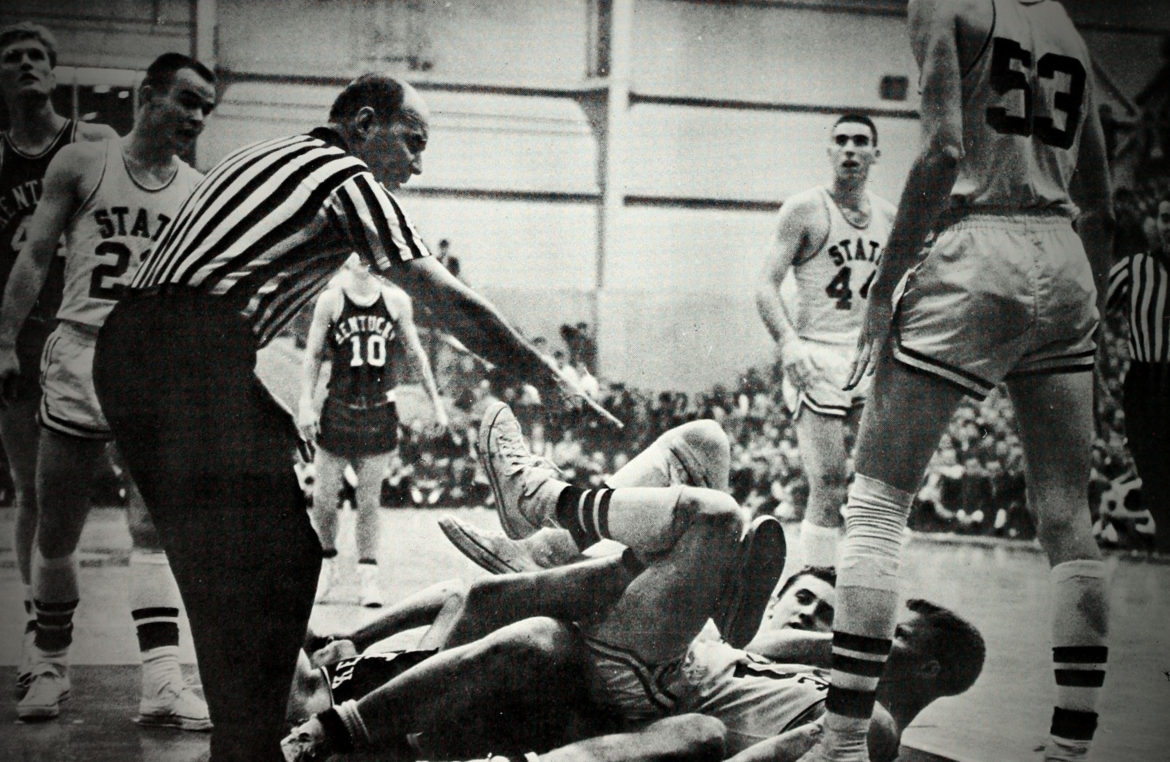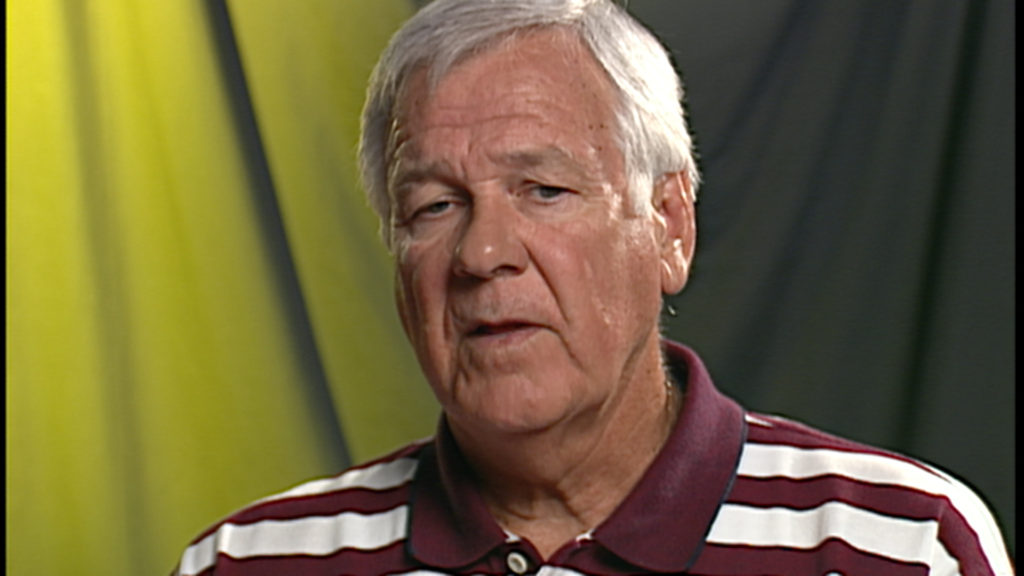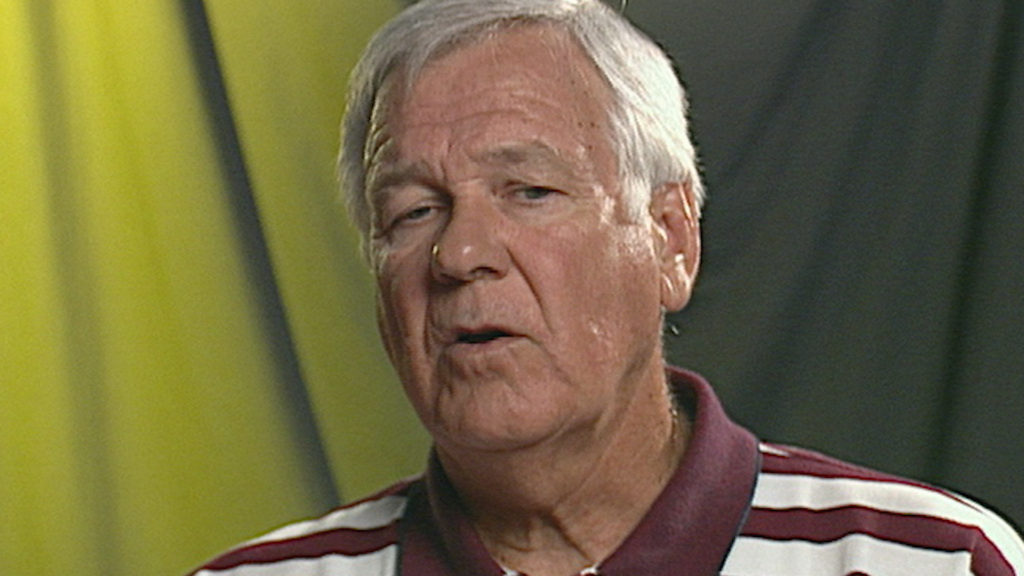In 1963, the Mississippi State University men’s basketball team had to sneak out of the state to play in the NCAA basketball national championship tournament. The highly ranked Bulldogs had been denied participation in the tournament the previous 4 seasons because of an unwritten law that prohibited Mississippi collegiate sports teams from competing against intergrated teams. The university president, coach and players defied the governor and state legislature and traveled to East Lansing, Michigan in March, 1963 in a game against Loyola-Chicago that helped change the sport forever.
In 2001, my company — Broadcast Media Group — produced the first documentary based on the event. “One Night in March” aired locally on Public Television and did the festival circuit. The project was a mixture of SD footage, photographic stills and newspaper clippings.
I wanted to freshen up the project for the 50th anniversary in 2013 by re-editing it in 1080 HD, adding in newly discovered footage and generally cleaning up the program.
It was easy in After Effects to reanimate the picts to the needed resolution. Every new interview since the original production had been shot in some flavor of high definition. Likewise, the new B-roll had been acquired with a Canon C300 at 1080 23.98 fps.
But we had some irreplaceable interviews on Betacam SP that had to be in the new piece. The challenge was to make the SD footage look as good as possible in an HD project.
Converting the EDL from my old, trusty Media 100 project file was one of the easiest steps, thanks to the team at Boris. Their current version of the Media 100 application opened the old project easily and created an XML I could read into Premiere Pro CS6, our new edit platform of choice.
Now came the hard part — upconverting the SD footage to make it usable in an 1080 program.
Back in 1998-2001, we shot some great interviews with members of that historic basketball team. It was great-looking footage — by 2001 standards. Betacam SP at 29.97 fps and a 4 x 3 aspect ratio. Vintage SD.
But nostalgia only takes you so far. We needed a serious tool to get us to full HD with minimal artifacts and great scaling.
We tried some of the available software solutions on the Mac platform. The results ranged from blah to OK. It’s just not easy to make BetaSP SD look good.
Or so I thought.
Enter the Blackmagic Design Teranex 2D Processor. Or as we call it in my shop — Black Magical Pixie Dust.
At NAB 2012, the focus was on the Blackmagic Cinema Camera. But tucked back in the recesses of the BMD booth was the Teranex 2D Processor with its jaw-dropping price right under $2,000.
This was a box that had cost close to $100,000 just a few months before. Now Grant Petty and the Blackmagicteers were promising the legendary upscale/crossconverting muscle of a full-blown Teranex for a fraction of the original cost.
Sure. I’ll try the Kool-aid. At this point, we were desperate. The software solutions were ho-hum at best. We really needed the Teranex to work.
We got the unit and threw it into service.
The Teranex 2D Processor processor harkens back to the days where rack-mount gear could be operated solely by front-control panels without the need to tether to a computer for control.
Operation is simple. Connect your source to the input side using either composite or component analog (SD or HD) or via SDI (again SD or HD). You can connect a DB25 audio breakout cable for XLR analog or AES/EBU audio ins and out or use line level RCA jacks.
Once you hook up your source — in our case a Sony UVW 1800 — you dial in the destination format for output on the front panel. We wanted 1080 HD 29.97 FPS with a 16×9 cut as our output.
The output via HD-SDI to our Flanders Scientific monitor was stunning. Minimal upscale artifacts. Motion looked great. The 16×9 cut framed nicely. Audio embedded nicely with no sync issues.
Wow. There must be magic pixie dust in there.
Our footage was of well-lit interviews on neutral backgrounds with minimal motion. They no longer looked like SD acquisitions.
The Teranex 2D Processor didn’t make these late 20th century pieces of video look like they were shot on our modern Canon C300, but they didn’t stick out like a sore thumb, either.
Amazing.
Hurdle one passed. Next up — some game footage from 1963 that had been transferred to BetaSP. Bad lighting. Bad motion. The kind of images you would expect from coaches film from a 1963 college basketball game.
We used the same configuration on the Teranex. BetaSP VTR into component inputs with HD SDI out at 1080 29.97 fps.
And we got the same great-looking results. Pixie dust struck again.
The Teranex 2D Processor functions as a front panel-driven stand alone box or it can be used as a capture card via the Thunderbolt port on the back. It will work with the usual suspects — FCP (7 and X), Premiere Pro, Media Composer and Resolve. It makes a great capture system for any Thunderbolt equipped Apple machine.
We tried it in stand-alone mode, feeding its HD-SDI output to a MacPro with a PCIe capture card and also as an ingest device. The quality was good both ways, but using it as a native card did seem to produce a slightly sharper image.
The Teranex also does format conversion, transcoding between NTSC and PAL in both SD and HD. Some of the alphabet/number soup it works in:
SD Format Support
625/25 PAL, 525/29.97 NTSC and 525/23.98 NTSC
HD Format Support
720p50, 720p59.94, 1080PsF23.98, 1080p23.98, 1080PsF24, 1080p24, 1080PsF25, 1080p25, 1080PsF29.97, 1080p29.97, 1080i50, 1080p50, 1080i59.94 and 1080p59.94
I’m telling you, it’s magic pixie dust.
I would think a current generation 27” iMac with an i7 and 32 gigs of RAM with a Teranex 2D Processor in tow would make a killer video production station. Park a rack of SD VTRs next to it, and you will have your own up/cross convert system ready to handle almost anything.
The response to the reworked “One Night in March” documentary has been overwhelmingly positive. It aired on Mississippi Public Broadcasting several times and garnered the audience choice award at the 2013 Magnolia Independent Film Festival. The Teranex 2D Processor helped make it possible by letting us include footage that we would have seriously considered cutting due to its SD limitations.
Blackmagic Design continues to amaze with their ability to take existing technologies that are financially out of reach to most film-makers and post shops, acquire and polish them a bit, then unleash them at a radical price point that shakes the foundations of the industry. The Teranex 2D Processor convertor falls into the same category as every other revolutionary BMD product. It just doesn’t have a micro-43 mount and shoot in RAW.



